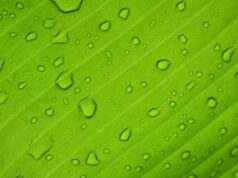A natural brilliant blue coloring has been discovered by an international team of researchers including chemists at the University of California, Davis. The new cyan blue, obtained from red cabbage, could be an alternative to synthetic blue food colorings such as the widely used FD&C Blue No. 1. The work is published April 7 in Science Advances.
“Blue colors are really quite rare in nature—a lot of them are really reds and purples,” said Pamela Denish, a graduate student working with Professor Justin Siegel at the UC Davis Department of Chemistry and Innovation Institute for Food and Health.
Having the right blue color is also important for mixing other colors, such as green. If the blue isn’t right, it will produce muddy, brown colors when mixed, Siegel said.
Red cabbage extracts are widely used as a source of natural food colorings, especially reds and purples. These dyes are called anthocyanins. For about a decade, a team led by scientists at the Mars Advanced Research Institute and Mars Wrigley Science and Technology, in collaboration with the UC Davis Innovation Institute for Food and Health, The Ohio State University, Nagoya University, Japan, the University of Avignon, France and SISSA University, Italy have been working on isolating a blue anthocyanin from red cabbage. But the natural blue coloring is present only in tiny amounts.
Enzymes to convert colors
Find your dream job in the space industry. Check our Space Job Board »
Denish, graduate students Kathryn Guggenheim and Mary Riley, and Siegel figured out a way to convert other anthocyanins in cabbage into the blue color compound. They screened public libraries of millions of enzymes for candidates that might do the job and tested a small number in the lab. Based on those results, they used computational methods to search a huge number of potential protein sequences—10 to the power of 20, more than the number of stars in the universe—to design an enzyme that would accomplish the conversion with high efficiency.
“We used these tools to search the universe for the enzyme we’re interested in,” Siegel said.
With this enzyme, they were able to convert the anthocyanin blue from a tiny fraction of red cabbage extract into a primary product, allowing the institute researchers and other collaborators to fully characterize the new blue coloring.
Siegel and Denish have founded a startup company, PeakB, to develop the technology for commercial applications. Enzymatic conversions are very widely used in food production, for example in making cheese, Siegel said.
Explore furtherThe mystery of the blue flower: Nature’s rare color owes its existence to bee vision
More information: P.R. Denish et al. The Discovery of a natural cyan blue: A unique food-sourced anthocyanin could replace synthetic brilliant blue. Science Advances (2021). advances.sciencemag.org/lookup … .1126/sciadv.abe7871
Image Credit: Unsplash/CC0 Public Domain










